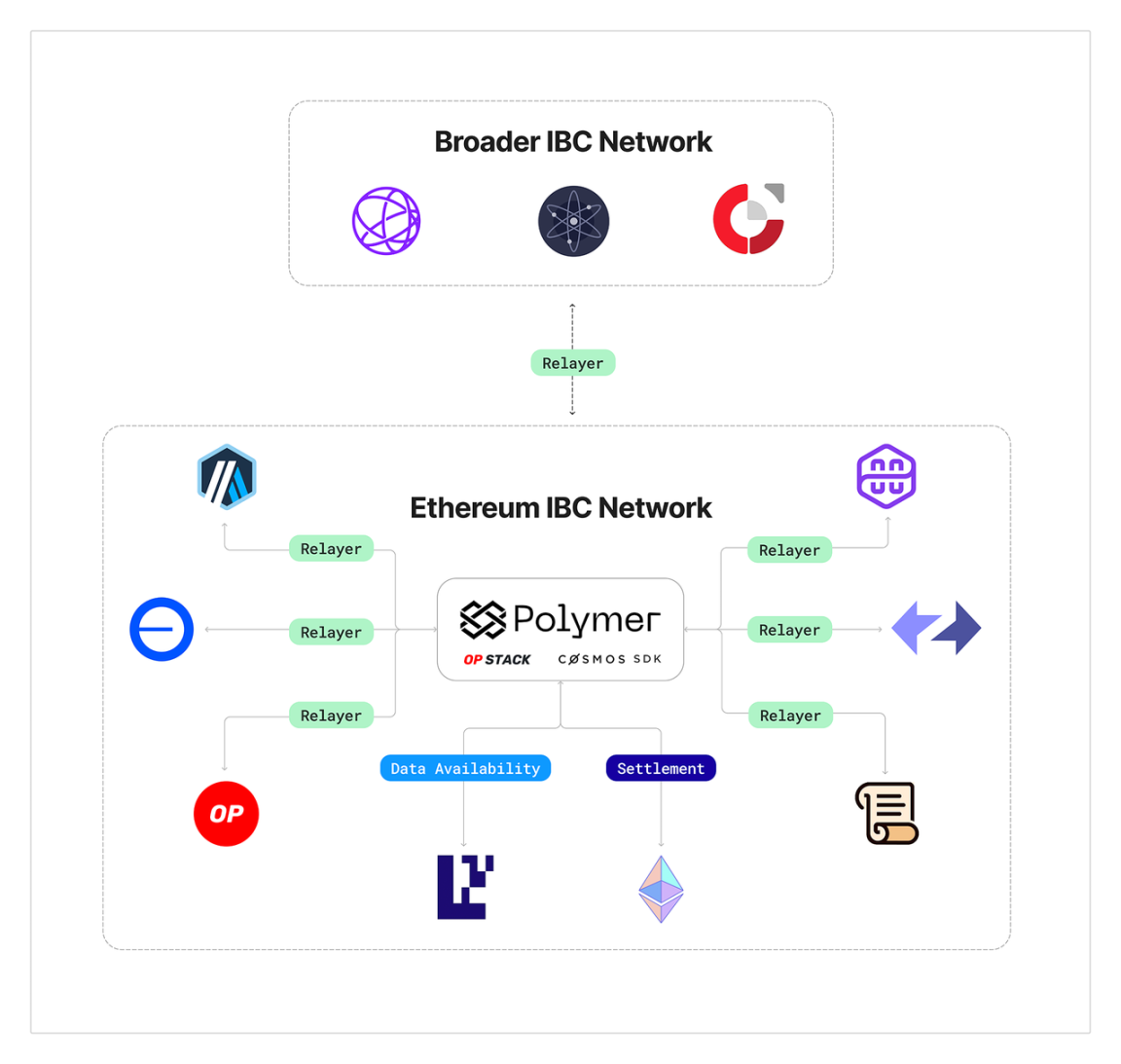Author: 1912212.eth, Foresight News
Polymer Labs recently launched the Polyverse testnet, and the launch of the mainnet is not far off. Among the various projects focusing on cross-chain interoperability, Polymer Labs has chosen to focus on interoperability protocols on Ethereum.
In January of this year, Polymer Labs completed a $23 million Series A financing round, led by Blockchain Capital, with participation from Coinbase Ventures, Placeholder, and others. The seed round of financing can be traced back to March 2022, with Distributed Global and North Island Ventures leading the round, and participation from Digital Currency Group (DCG), Coinbase Ventures, and others.
What is Polymer?
First and foremost, Polymer focuses on Ethereum's L2 cross-chain. It provides IBC as the interoperability hub for Ethereum. Polymer allows applications to have composability between Ethereum Rollups and access to the IBC network and feature set, including inter-chain accounts, application data callbacks, and more.
In a recent interview, Polymer's co-founders Bo Du and Peter Kim revealed that Polymer had previously focused on building the Cosmos chain and was close to completion when they decided to change its architecture and shift direction to L2 cross-chain.
One reason for this decision was the ability to retain the written Cosmos SDK code without major adjustments. The most important reason, however, is that Ethereum has seen a large number of Rollups emerge, acting as application chains for the distribution mechanism of IBC technology. It doesn't make much sense for cross-chain interactions between Rollups because Rollups themselves interact with the settlement layer they are on.
How does Polymer solve the fragmentation problem in the Ethereum ecosystem?
As more and more layer 2 network protocols emerge on Ethereum, ecosystem fragmentation has become increasingly apparent. Composability and security are also major issues. These problems were not very obvious when the L2 scale was small, but as L2 continues to grow, these issues need to be addressed urgently.
Various L2 solutions in the past have focused on building zero-knowledge proof and shared ordering to improve their interoperability, but most are limited to their own frameworks and can only solve partial problems. Polymer believes that this fragmentation caused by the lack of unified standards can be addressed by the IBC protocol.
Polymer itself is an Ethereum Rollup, mainly composed of a settlement layer, execution layer, data availability, and proofs. The difference between Polymer and other Rollups is that Polymer focuses on meeting the interoperability needs of applications on other Rollups, rather than executing decentralized applications themselves.
The settlement layer is built by OP Stack, and the execution layer is connected to Rollups and IBC for interoperability through Cosmos SDK. Data availability is provided by EigenDA. In the proof process, the OP Stack modularizes fault proofs and provides interaction fraud proofs and ZK validity proofs.
Polymer adopts a hybrid approach, combining the settlement function of OP Stack with the development experience and interoperability of Cosmos SDK, and utilizes Eigenlayer's data availability to extend the data availability throughput of the Ethereum network to 10 mb/s.

The official explanation for building the settlement layer based on OP Stack is its scalability, flexibility, high performance, and consideration of the prosperity and consistency with Ethereum security in the ecosystem.
In terms of data availability, EigenLayer was chosen because EigenDA's security is second only to Ethereum DA. EigenDA borrows the security of Ethereum staking and validator. It also performs well in scalability and cross-chain interoperability.
Polymer completely outsources the transport layer and partially outsources the state layer. The IBC transport layer runs on Polymer, while the IBC application layer runs on chains that support IBC.
In addition, through Polymer, applications can build their own cross-chain bridges and use L1 trust layers to control the validation of incoming and outgoing messages, eliminating the need for additional trust assumptions from third parties.
The difference from Wormhole is that before generating or sending messages, Wormhole requires validation by a majority of 19 out of 13 nodes. Another cross-chain protocol, Axelar, relies on validators for proof.
Testnet
The testnet will be launched in three stages, named "Basecamp," "Into the Unknown," and "Discovery." The first stage, Basecamp, has already been launched to encourage developers to join the testnet. Currently, connecting to their GitHub account is required on the official website to verify eligibility.
The second stage will begin next week, where Polymer will promote some decentralized applications to end users, who will also be able to receive rewards.
The final stage, "Discovery," will focus on improving and optimizing incentive mechanisms to encourage user participation.
Conclusion
It is foreseeable that with the surge of Ethereum L2 protocols and the increasing popularity of modularity, the demand for L2 interoperability protocols like Polymer will increase significantly in the future.
免责声明:本文章仅代表作者个人观点,不代表本平台的立场和观点。本文章仅供信息分享,不构成对任何人的任何投资建议。用户与作者之间的任何争议,与本平台无关。如网页中刊载的文章或图片涉及侵权,请提供相关的权利证明和身份证明发送邮件到support@aicoin.com,本平台相关工作人员将会进行核查。




